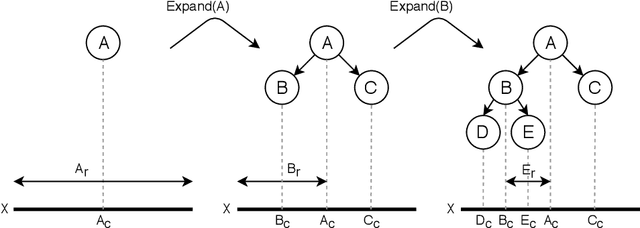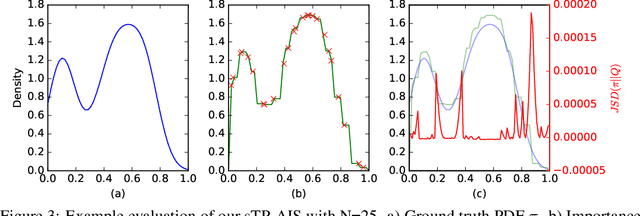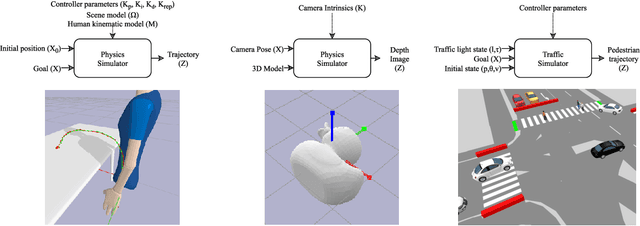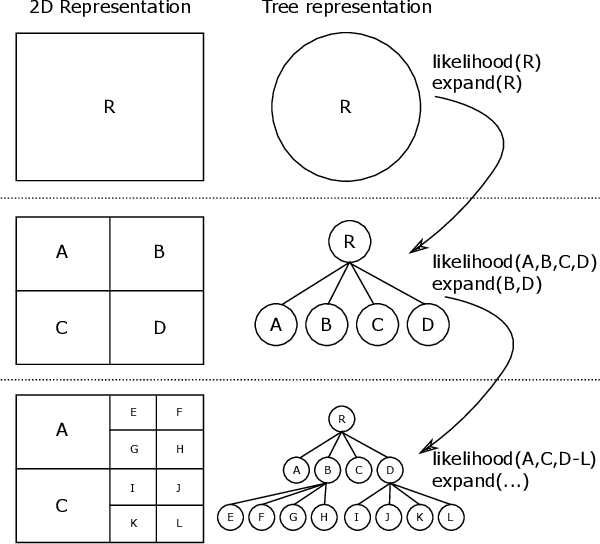Javier Felip
Tree pyramidal adaptive importance sampling
Dec 18, 2019



Abstract:This paper introduces Tree-Pyramidal Adaptive Importance Sampling (TP-AIS), a novel iterated sampling method that outperforms current state-of-the-art approaches. TP-AIS iteratively builds a proposal distribution parameterized by a tree pyramid, where each tree leaf spans a convex subspace and represents it's importance density. After each new sample operation, a set of tree leaves are subdivided improving the approximation of the proposal distribution to the target density. Unlike the rest of the methods in the literature, TP-AIS is parameter free and requires zero manual tuning to achieve its best performance. Our proposed method is evaluated with different complexity randomized target probability density functions and also analyze its application to different dimensions. The results are compared to state-of-the-art iterative importance sampling approaches and other baseline MCMC approaches using Normalized Effective Sample Size (N-ESS), Jensen-Shannon Divergence to the target posterior, and time complexity.
Real-time Approximate Bayesian Computation for Scene Understanding
May 22, 2019



Abstract:Consider scene understanding problems such as predicting where a person is probably reaching, or inferring the pose of 3D objects from depth images, or inferring the probable street crossings of pedestrians at a busy intersection. This paper shows how to solve these problems using Approximate Bayesian Computation. The underlying generative models are built from realistic simulation software, wrapped in a Bayesian error model for the gap between simulation outputs and real data. The simulators are drawn from off-the-shelf computer graphics, video game, and traffic simulation code. The paper introduces two techniques for speeding up inference that can be used separately or in combination. The first is to train neural surrogates of the simulators, using a simple form of domain randomization to make the surrogates more robust to the gap between the simulation and reality. The second is to adaptively discretize the latent variables using a Tree-pyramid approach adapted from computer graphics. This paper also shows performance and accuracy measurements on real-world problems, establishing that it is feasible to solve these problems in real-time.
 Add to Chrome
Add to Chrome Add to Firefox
Add to Firefox Add to Edge
Add to Edge